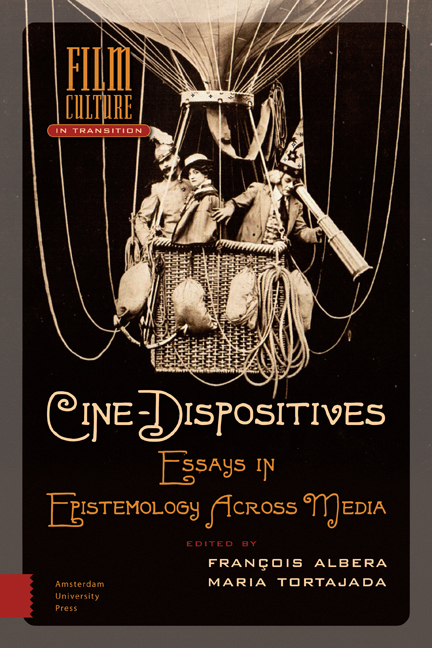Forms of Machines, Forms of Movement
Published online by Cambridge University Press: 10 February 2021
Summary
for Hadrien
Fac-similes
In a documentary produced in 1996-1997, American filmmaker Stan Brakhage, who spent much of his life painting and scratching film, stated that
One of the major things in film is that you have 24 beats in a second, or 16 beats or whatever speed the projector is running at. It is a medium that has a base beat, that is intrinsically baroque. And aesthetically speaking, it's just appalling to me to try to watch, for example, as I did, Eisenstein's Battleship Potemkin on video: it dulls all the rhythm of the editing. Because video looks, in comparison to the sharp, hard clarities of snapping individual frames, and what that produces at the cut, video looks like a pudding, that's virtually uncuttable, like a jello. It's all ashake with itself. And furthermore, as a colorist, it doesn't interest me, because it is whatever color anyone sets their receptor to. It has no fixed color.
Each optical machine produces a specific mode of perception. Canadian filmmaker Norman McLaren also devoted an essential part of his work to research on the material of film itself, making films with or without camera through all kinds of methods, drawing, painting, scratching film, developing a reflection on what a film frame is and what happens in the interval between two images. Yet today his work is distributed by the National Film Board of Canada only in digital format, and such prestigious institutions as the Centre Pompidou in Paris project it that way – even as the compression of digital files required by their transfer on DVD pretty much abolishes the fundamental cell that is the single frame.
Beyond these singular cases, the discontinuation of film as a medium to the benefit of digital media raises a number of issues at the moment. As it happens, these issues – originating in equal parts in audiences, critics and professionals dealing with a transformation of their tools, methods and general professional structures – start from a common premise: “one can barely tell the difference” between film and digital. The stakes of the transition between formats are mostly economic, occasionally practical, sometimes tied to sporadic differences in rendering, but in the end these are just moving photographic images – or so the assumption goes.
- Type
- Chapter
- Information
- Cine-DispositivesEssays in Epistemology Across Media, pp. 275 - 298Publisher: Amsterdam University PressPrint publication year: 2015

